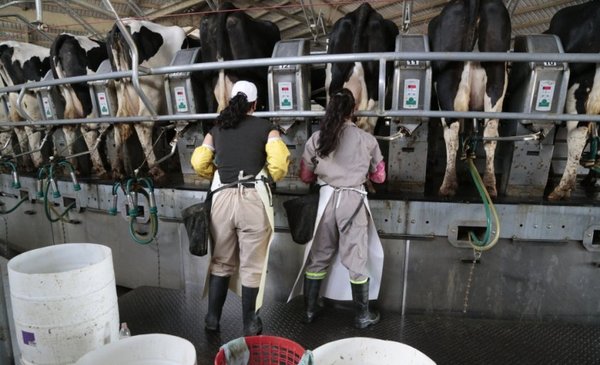The wages of rural workers will have an adjustment of 7.25% retroactive to July 1. The salary agreement in force in the agricultural sector stipulated an adjustment of 3.6% as of the second semester. In addition, Group 22 (livestock, agriculture and related activities) agreed to advance the corrective for inflation to 1 year and not to 2 years as established in the agreement to prevent workers from losing purchases with their salary, as it had been suggestion of the Executive Power for the private sector.
In the moving year ending in June, inflation was 9.29%, while the expected inflation (in the agreement) for that period was 5.57%. This determined that the inflationary correction is 3.52% for the moving year July 2021-June 2022.
In the case of employees of the dairy farms, the nominal monthly salary for the apprentice goes to $26,405 and a daily wage of $1,000. For the specialized laborer, the minimum wage will be $29,652 per month with a daily wage of $1,186. Meanwhile, a capable person will receive a salary of $32,621 or a daily wage of $1,305, reported the National Association of Milk Producers (ANPL).
To this income, we must add a ficto for food and housing of $4,867 per month or its daily equivalent of $195.
In the case of the Employment Promotion category —a new category to encourage employment in the sector—, the salary adjustment will be 5.94%, with a nominal monthly salary of $21,188 or a daily wage of $843.
Rural workers will have a new nominal adjustment on January 1, 2023 of 3.5%, made up of the sum of 3% for projected six-monthly inflation and 0.5% for salary recovery. In June of that year the current agreement will fall and a new one will have to be negotiated.
Half agreed to advance corrective measures
In June some 83 negotiating tables had to decide if they accepted the suggestion made by the Executive Power to advance the corrections for inflation. A survey carried out by The Observer at the end of July—which covered 60 of those subgroups— showed that in 30 cases (50%) there was an agreement between the union and employers to advance the payment of the corrective for inflation. In others 21 cases (35%) there was no agreement due to the refusal of the employersin 8 it was still negotiating and in one case it was expected to have the inflation data for June so that a previously planned safeguard clause would be activated.
As reported by the Executive Branch, this negotiation covers some 300,000 workers in different sectors of activity in the private sector. In the case of State workers, the government advanced 2% from July on account of the next adjustment that these employees should receive from January 1, 2023.







